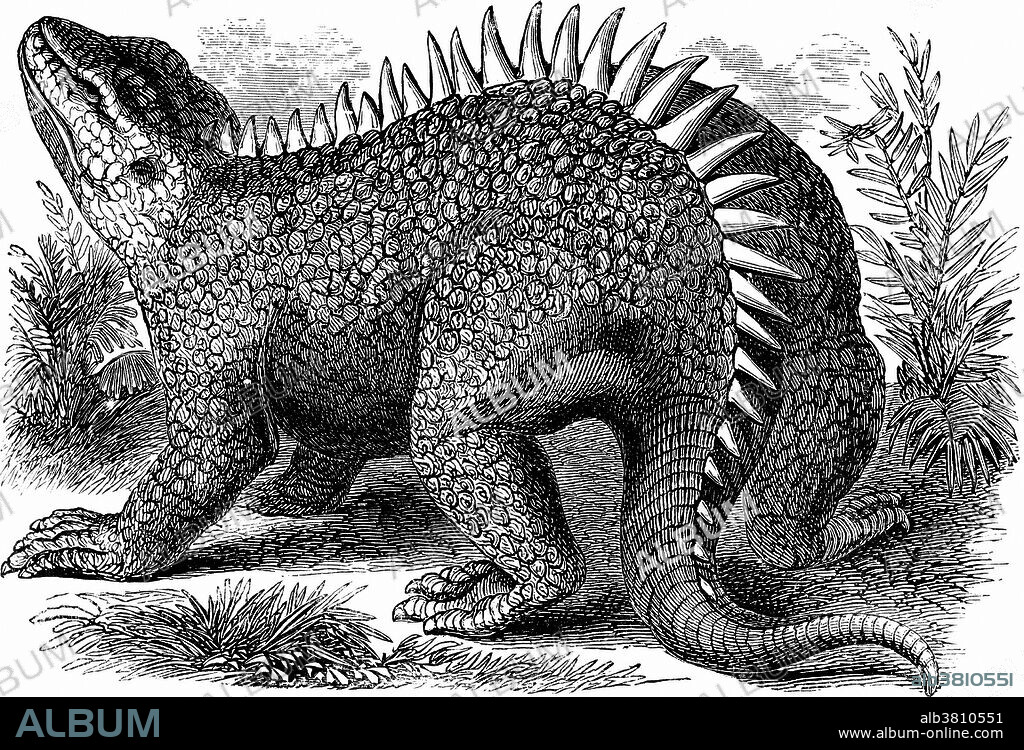alb3810551
Hylaeosaurus, Cretaceous Dinosaur

|
Añadir a otro lightbox |
|
Añadir a otro lightbox |



¿Ya tienes cuenta? Iniciar sesión
¿No tienes cuenta? Regístrate
Compra esta imagen

Título:
Hylaeosaurus, Cretaceous Dinosaur
Descripción:
Ver traducción automática
Hylaeosaurus (forest lizard) is the most obscure of the three animals used by Richard Owen to define Dinosauria, in 1842. The original specimen, recovered by Gideon Mantell in 1832, now resides in the Natural History Museum of London, where it is still encased in the limestone block in which it was found. Despite never having been prepared, it is still the best specimen that exists of this genus of primitive, armoured ankylosaurian dinosaur. Hylaeosaurus was an armoured, quadrupedal, plant-eating dinosaur from the early Cretaceous period, about 135-119 million years ago. It looked a lot like its more advanced relative Ankylosaurus, but didn't have the bony nodes at the end of its tail or horns on its head.
Crédito:
Album / Science Source / New York Public Library
Autorizaciones:
Modelo: No - Propiedad: No
¿Preguntas relacionadas con los derechos?
¿Preguntas relacionadas con los derechos?
Tamaño imagen:
3969 x 2700 px | 30.7 MB
Tamaño impresión:
33.6 x 22.9 cm | 13.2 x 9.0 in (300 dpi)
Palabras clave:
1832 • ANIMAL • ANIMALIA • ARTE • BOSQUE • CHORDATA • COMIENDO • CRETÁCEO • CUADRUPEDO • DIBUJO • DINOSAURIA • DINOSAURIO • DINOSAURIOS • EDAD • EXTINCIÓN • EXTINGUIDO • FAUNA • HERBIVORO • HISTORIA • HISTORICO • ILUSTRACION • LAGARTO • NADIE • OBRA DE ARTE • OWEN • PALEOBIOLOGIA • PALEONTOLOGIA • PERIODO • PLANTA • PREHISTORIA • PREHISTORICO • REPTIL • REPTILIA • SIGLO XIX • SIGLO • TERRESTRE • VERTEBRADO
 Pinterest
Pinterest Twitter
Twitter Facebook
Facebook Copiar enlace
Copiar enlace Email
Email
